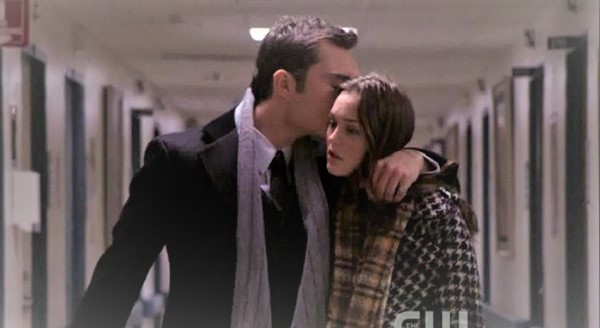
We commonly hear that when two people are magnetically drawn toward one another it is a sign that they have encountered a soulmate.
When we first meet someone and feel pulled toward them it is usually due to an indefinable feeling that we can’t quite put our finger on—something that makes us want to explore the connection further.
However, it is not always as simple and clear as it first may seem, and when there is a lot of pain and trauma in a relationship, what many people eventually realize is that the person that they met is not meeting them in love, as a soulmate connection would, but is instead painfully triggering and pulling up all of their unhealed wounds without any regard for the consequences.
We meet people for various reasons and the deep connections we make can tell us an incredible amount about ourselves, but only if we are open to looking inward.
If we are closed off, guarded and in the habit of blaming others for our emotions, feelings and behaviors then it is likely that we will keep meeting similar types of wound mates and repeating the same dysfunctional patterns over and over again.
This will continue until we eventually recognize that this toxic dynamic keeps reoccurring so that much-needed introspection, soul examination and growth can take place.
When we meet someone new, or when we have been in a relationship for some time, we can heighten our awareness and pay attention to how the energetic bond feels so that we understand how the connection is resonating with our soul.
This will help us recognize whether it is a healthy or harmful dynamic, and also find out why this person has entered our life and how their behaviors, traits and tendencies are impacting us.
If the energy we feel is harmonic and balanced, even when we are triggered due to historic emotional pain, then the connection is likely a soulmate one. If we feel on edge, uneasy, self-conscious and as though there is intense friction in the air, then it is likely the connection has been made with a wound mate.
The main difference between a soulmate and a wound mate is that a soulmate will create space so we can unearth the unhealed parts of ourselves and in doing so bring about much-needed healing. When we are immersed in compassion, care and love, our wounds naturally rise to the surface where they can be seen, tended to and healed.
A wound mate will not offer the same tenderness that a soulmate offers. When we engage with a wound mate, our subconscious wounds will feel poked and prodded, often causing us to feel too scared to expose our shadow side for fear of it being ridiculed, blamed or shamed whenever it makes an appearance.
The reason wound mate relationships can be so limiting is that we may try to mask a side of ourselves partly so that we do not repeatedly feel hurt when our wounds are churned up and exposed. We may also attempt to only show our “light” side so that we receive their acceptance, and hopefully, love.
Wound mates make it clear that our dark/shadow side is not welcome in the relationship, however, because there is no acceptance or unconditional love being offered and instead there is condemnation and rejection, the interaction automatically triggers our insecurities, and therefore our unhealed wounds, to appear. It is an emotionally messy and extremely confusing catch 22.
It is possible that a wound mate can also be, or become, a soulmate. However, as the ego’s presence is dominating, demanding and desperate to be in control, breaking down egotistical tendencies is essential before a heart-centered connection and secure, loving soulmate bond can be established.
One thing that fuels the ego is fear. Until both partners transition to a place of fearlessness and empathy when dealing with love and wounds, the ego will continue to erect restrictive barriers between the two, making it almost impossible for an authentic bond to form, and also making it highly likely that our wounds will become the focus of interest within the relationship.
This is due to the ego being obsessed with wounds and pain, which is ironic, as the ego works tirelessly to try to avoid wounds and pain. In the ego’s frantic attempt to remain free from emotional harm by wearing a hardened armor on the surface, it actually creates the exact environment for pain to flourish, for fresh wounds to be inflicted and for old wounds to embed even deeper.
Instead of working with one another to resolve the unresolved emotional pain, we wrap layers of pain and shame around it, while digging sharp objects into it as we go, thus creating more wounds, trauma and chaos.
Although we often hear that we do not need anyone else to heal us, soulmates and wound mates can offer a direct link to the location of our wounds as the intimate connection we have mirrors back to us a blueprint of own soul and therefore illuminates whatever pain has accumulated within us.
When we are aware of our inner emotional pain, these connections can offer the optimum opportunity to fast-track soul growth and internal healing, which in turn, when we are healed of our emotional wounds, helps us become more compassionate, loving and understanding of those around us.
Once we are aware of our own wounds and have put in the work to heal them, we can better support and assist others around us with compassion, empathy and understanding while they heal theirs.
The difficulty arises when our wound mate’s torch shines on our wounds but only with the intention to toy with them and pick them apart, as their ego demands them to be inconsiderate and intolerant of any residual emotional trauma. The ego sees emotional trauma as a weakness and instead of working together to heal wounds and discover the immense strength that exists in vulnerability and compassion, they will tear the wounds apart to try to destroy them further and avoid having to associate with them.
The even greater irony is that the wounds our wound mate sees in us directly reflect ones that are hidden within them. If only conscious awareness was raised, both people could see that these two emotionally wounded soldiers could actually offer the exact remedy required to heal their own, as well as one another’s, wounds—like one huge loving Band Aid.
However, while the ego is the main character on the stage, the likelihood of this happening is almost non-existent.
The key to a wound mate relationship is to become aware of what the dynamic holds and not to react to the triggers and conflict that arise. Instead we can focus on healing ourselves and becoming introspective so that we do not hold others accountable for our internal suffering. While it is a beautiful experience to be held safe in a soulmate relationship, we can also offer unconditional love, acceptance, and forgiveness both to ourselves as well as our wound mate.
Love is the greatest healing energy on Earth however, if the ego—built by past wounds—is blocking the flow of love, the loving energy will not be able to reach into and tend to the injured parts of our soul.
The only thing that prevents a wound mate from becoming a soulmate is the ego, and unfortunately it is not an easy thing to deconstruct.
Therefore, until we are aware that we have entered a dynamic with a wound mate, they will continue to draw out the suppressed, rejected and denied parts that are desperate to be acknowledged and healed, and when they are revealed they will be subject to further torment.
Soulmates are the opposite. Although they also draw out wounds from deep inside us, they will gently lick those wounds with us so that they are tenderly soothed and healed.
“Wound-mates are those relationships that are sourced in unresolved emotional patterns, issues and holdings. Not to be confused with soul-mates, which will also trigger shadowy material to the surface, but which hold a greater deal of promise. At the heart of soul-mate connections is an opportunity to work with the shadow in a growthful manner—working the material as grist for the soul mill—while wound-mates just flounder in the mud, trigger after trigger, downward spiral after downward spiral, attached at the waste.” ~ Jeff Brown
~
Author: Alex Myles
Image: YouTube screenshot
Editor: Nicole Cameron











Read 2 comments and reply